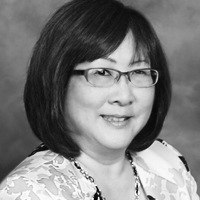Learning Objectives
Our objectives this afternoon are to look at the characteristics and learning preferences of various generational groups. In the first half of this presentation, I will compare and contrast different generational cohorts. Towards the end of this presentation, I will focus more on the millennial generation. I will describe some tips and personal experiences of successfully teaching the millennial generation student.
Generational Cohorts
For the first time in history we have four distinct generations interacting in the classroom. Ryder (1965), as well as Strauss and Howe (1991), were some of the first researchers to study generational cohorts. You are looking at groups of people that belong to a particular generation that share specific characteristics, attitudes, and values. There are also certain historical events or societal actions that happened during that generational time that impacted beliefs, behaviors, and values. It is understandable not to want to stereotype a whole generation of individuals. You will always find someone who says “I don’t fit into that particular mold,” and that is not my intention. The unique concept of generational cohorts is that if you can understand the context or influences of which persons from a particular generation grew up, you can then maybe understand how those values translate into the workplace and also how to teach persons of that generation.
When we look at the generational cohorts, depending upon the researcher or scholar, the dates vary maybe one or two years. The GI Generation, also called the Veterans or Traditionalists, were born between 1925 and 1945. For some of you, this will be your great-grandparents, grandparents, and for some your parents. Those born 1946 to 1964 are called the Boomers, the Boom generation. This is a very large cohort right now that is aging and coming into retirement. These were the children of the GI generation, who came back from the war, and this is the reason why this is a very large cohort. The next generation is 1965 to 1979 and is considered Generation X. You might have heard of Gen-Xers. Below them, Generation Y (Net Generation or Millennials) are the majority we see in college classrooms right now. They are born between 1980 to 1994. The Millennial generation students do not like to be called the Millennial generation because it is so "1999". Taking a look below Generation Y or the Millennials is Generation Z. This generation does not exactly have a nickname yet. These are students or individuals born between 1994 to 2003. These are the teens that are coming to college next. I am going to compare and contrast the following cohorts to give you an idea of who these particular individuals are.
